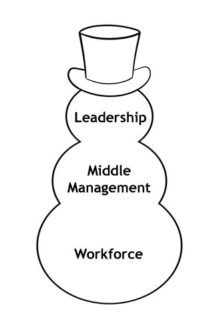Leveraging safety and health operations
How do we build a culture of problem-solving with our safety and health processes and tools?

Responding is Phil McIntyre, managing director, Performance Solutions by Milliken, Spartanburg, SC.
“Give me a lever long enough and a fulcrum on which to place it, and I shall move the world.” – Archimedes
Archimedes of Syracuse was a Greek mathematician, physicist, engineer, inventor and astronomer. In this oft-repeated quote, he was talking about the concept of leverage, which essentially means that through the proper use of tools, you can do significantly more than you could using brute force.
Many words are tossed around when the topic of safety and health is explored. Among them: ownership, engagement, accountability and behaviors. Rarely do you see the word “leverage” used in the same context as Archimedes’ quote when mentioned in a discussion of operational safety and health. Leverage, in this case, is implementing the people, processes and methods that effectively create the culture of continuous problem-solving in your safety and health operations.
Leverage is an important concept in physics and the baseline for a multitude of engineering principles, but in operational safety and health it likely can mean the difference between long-term success or exhaustion and failure.
So why do so many organizations fail to gain leverage in their safety and health processes? The opportunity in many cases lies in the inability to see where the weakness is occurring. To fully leverage your safety and health operation, you must first look at the roles and responsibilities of everyone through a different lens. Numerous case studies and white papers extoll the virtues of having leadership committed to safety and health. The power of consistent and heartfelt messaging about “safety as a value” is undeniable. Without this, you’re Sisyphus, continually pushing the boulder up the hill. Equally numerous are articles on the dynamics of transitioning the workforce from involvement to empowerment to engagement. Creating multiple “owners” of your safety and health processes fosters the accountability, transparency and sustainability of gains that everyone seeks.
Imagine these two constituencies of your safety and health structure as the head and the base of a snowman. What jumps out to you is the continually overlooked midsection of the snowman. This portion represents middle management, which is defined differently from organization to organization.
In some instances, middle management represents shift supervision. In others, plant management may be considered middle management. The lens/definition is specific to you and your organization, regardless of the industry/business in which you participate. The lesson to be learned is that if you have committed leadership and a workforce that has bought into improvement and you’re still not making gains, the odds are high that a segment of your organization – answering to one end of the snowman and responsible for the other end – is struggling to understand the role it plays in your safety and health processes.
Once the opportunity is observed, corrective actions, such as focused education, can be directed to this area. From there, with all three segments functioning together, leverage will occur and a culture of problem-solving with your safety and health processes/tools will develop.
Editor's note: This article represents the independent views of the author and should not be construed as a National Safety Council endorsement.
Post a comment to this article
Safety+Health welcomes comments that promote respectful dialogue. Please stay on topic. Comments that contain personal attacks, profanity or abusive language – or those aggressively promoting products or services – will be removed. We reserve the right to determine which comments violate our comment policy. (Anonymous comments are welcome; merely skip the “name” field in the comment box. An email address is required but will not be included with your comment.)

